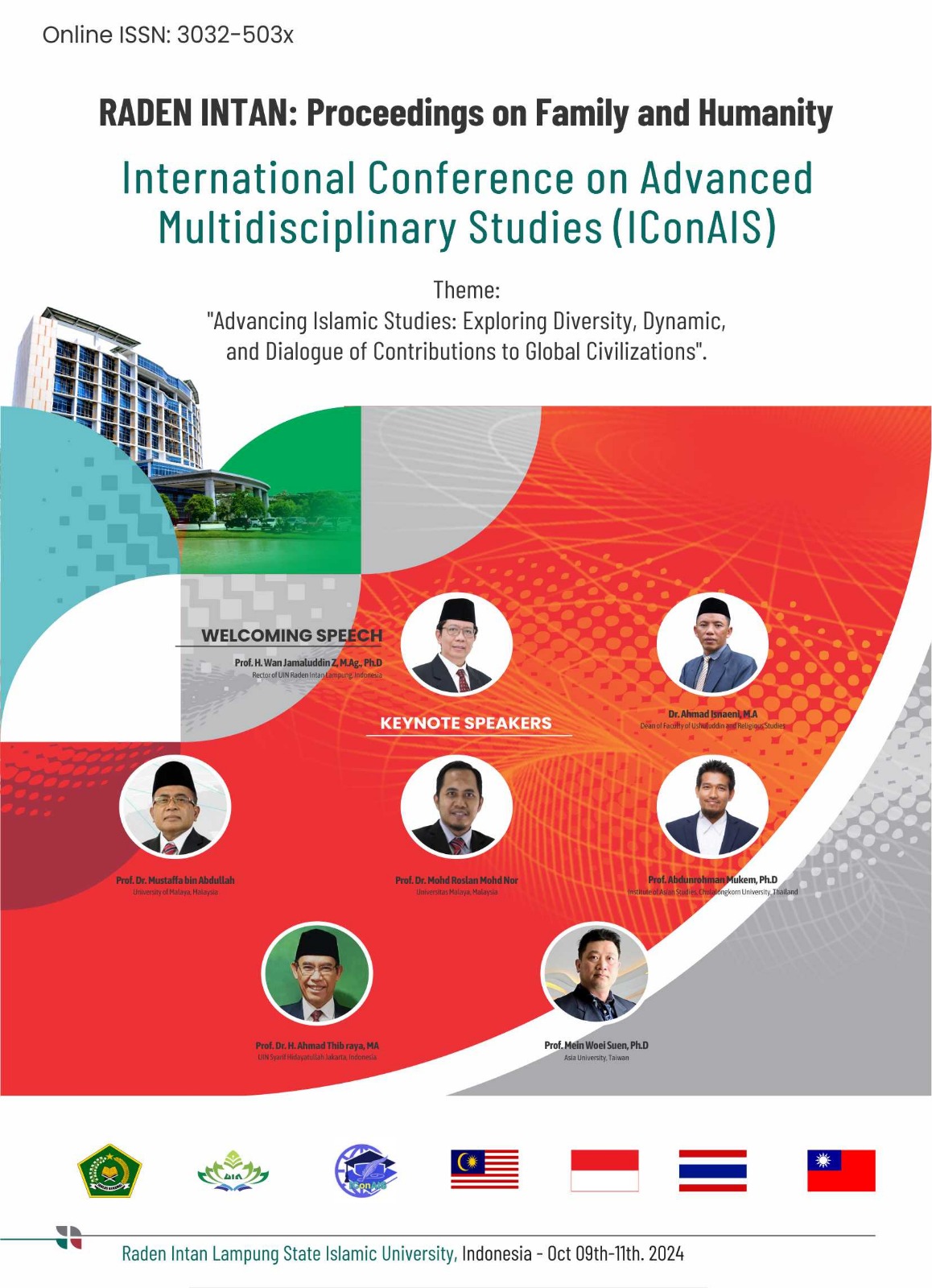Suleyman Ates' Interpretation of Reincarnation in the Qur'an (Historical Study of Surah Ash-Shura)
Published 2025-07-30
Keywords
- Reincarnation, Ash-Shura, Suleyman Ates
Copyright (c) 2025 Rahmat Ali Tirmidzi, Sutrisno Hadi, Mathias Raihan Narayan Hutautuk, Irham Jaelani (Author)

This work is licensed under a Creative Commons Attribution 4.0 International License.
Abstract
Interpretation of the cause of calamity in the Qur'an based on QS Ash-Shura verse 30, focusing on the historical study of Suleyman Ates' thought. Mufassir scholars interpret Ash-Shura verse 30 with the cause and effect of calamity. However, Suleyman Ates comes with a new context, namely about reincarnation, where the mufassir scholars do not believe in reincarnation. This research method uses a qualitative approach with content analysis of Suleyman Ates. Suleyman Ates, one of the contemporary interpreters, makes a valuable contribution to this understanding by taking a psychological approach to several verses in his tafsir book. This study will present and analyze an example of his approach in the framework of Surah Ash-Shura.
References
- Al-Qurtubi. Al-Jami' li-Ahkam al-Qur'an. Cairo: Dar al-Kutub al-Misriyyah.
- An-Nawawi, Abu Zakariya Yahya bin Syaraf ad-Dimasqi. (2007). Arb'ain Nawawi. Darussalam: 2nd cet. th, tahqiq: Muhammad Awad Haikal. transl: Abu Zur'ah ath-Thaybi. Arba'in Nawawi: Matan and Translation. Surabaya: Syabab Library, 2007.
- Ates, Suleyman. "2013-03-17-17-59-34." Suleyman Ates. Accessed June 10, 2024. https://www.suleymanates.com/index.php?option=com_content&view=article&id=606:2013-03-17-17-59-34&catid=48:mart-2013&Itemid=131.
- Ates, Suleyman. "2013-03-17-18-47-24." Suleyman Ates. Accessed June 10, 2024. https://www.suleymanates.com/index.php?option=com_content&view=article&id=607:2013-03-17-18-47-24&catid=48:mart-2013&Itemid=131.
- Ates, Suleyman. "2013-03-17-18-59-29." Suleyman Ates. Accessed June 10, 2024. https://www.suleymanates.com/index.php?option=com_content&view=article&id=609:2013-03-17-18-59-29&catid=48:mart-2013&Itemid=131.
- Hamka, Buya. (2020). Tafsir Al-Azhar Volume 6: Enriched with Approaches to History, Sociology, Sufism, Kalam Science, Literature, and Psychology. Depok: Gema Insani.
- Ibn Kathir. Tafsir al-Qur'an al-'Adhim. Beirut: Dar al-Kutub al-Ilmiyyah.
- Maududi, Syed Abul A'la. Tafhim al-Qur'an. Lahore: Islamic Publications.
- Nurhasanah, Fatimah (2015). Comparative Study of Reincarnation in Hinduism and Punarbhava in Buddhism. Riau: Sultan Syarif Kasim State Islamic University.
- "Every Child is Born in a State of Islamic Fitrah." Alsofwa. Accessed June 10, 2024. https://alsofwa.com/165-sms-setiap-anak-dilahirkan-dalam-keadaan-fitrah-islam.
- Shihab, Quraysh. (2007). Tafsir Al-Misbah: Message, Impression and Concordance of the Qur'an. Vol. 1. Jakarta: Lentera Hati.
- Yusmani, Hussein. (2014). Revealing Reincarnation in Islam. Jakarta: Islamic Publishes.
- "Quran.nu.or.id." Quran NU. Accessed June 10, 2024. https://quran.nu.or.id/al-muminun/13-14.

